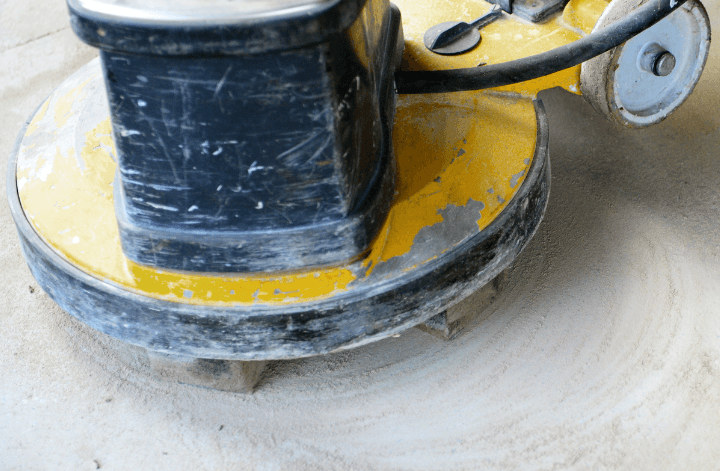From industrial warehouses to chic urban lofts, concrete has found its way into contemporary interior design. Yet, beyond its raw utilitarian guise lies a hidden potential—a potential brought to life through the transformative process of concrete buffing.
The Rise of Concrete as a Design Element
In recent years, there has been a notable shift in architectural trends towards minimalism and industrial aesthetics. Concrete, with its robustness and versatility, has emerged as a favored material among architects and designers seeking to create spaces that exude modernity and sophistication.
However, achieving the desired aesthetic with concrete involves more than just pouring and curing. It requires meticulous attention to detail and skilled craftsmanship, especially when it comes to concrete buffing—a process that elevates the material from its rough, utilitarian state to a polished, refined finish.
Understanding Concrete Buffing
Concrete buffing, also known as concrete polishing or grinding, is a multi-step process aimed at refining the surface of concrete to achieve a smooth, glossy finish. It involves the use of specialized equipment, including diamond-embedded grinding pads and polishing compounds, to gradually grind down the surface and reveal the underlying aggregate.
The process begins with coarse grinding to remove imperfections such as surface blemishes, unevenness, and minor stains. Successive stages of grinding with progressively finer grits follow, each refining the surface further until it achieves the desired level of smoothness and shine. Finally, a sealant is applied to protect the polished surface and enhance its durability.
The Artistry of Concrete Buffing
While concrete buffing is undoubtedly a technical process, it also requires a keen eye for detail and a sense of artistry. The craftsman must carefully assess the characteristics of the concrete—such as its composition, aggregate content, and porosity—and tailor the buffing process accordingly to achieve the desired aesthetic outcome.
Moreover, concrete buffing offers endless possibilities for customization. By varying the grinding techniques, selecting different levels of aggregate exposure, and experimenting with color dyes and stains, designers can create a wide range of finishes—from sleek and modern to rustic and textured.
The Benefits of Concrete Buffing
The allure of concrete buffing extends beyond its aesthetic appeal. Here are some key benefits of this transformative process:
- Durability: Polished concrete surfaces are exceptionally durable and resistant to wear and tear, making them ideal for high-traffic areas such as retail spaces, offices, and residential interiors.
- Low Maintenance: Unlike traditional flooring materials such as wood or tile, polished concrete requires minimal maintenance. Its smooth, non-porous surface makes it easy to clean and resistant to stains, dust, and allergens.
- Cost-Effectiveness: Concrete buffing can be a cost-effective alternative to installing new flooring, especially in renovation projects where existing concrete slabs can be refurbished rather than replaced.
- Environmental Sustainability: Concrete is a sustainable building material with a low environmental impact. By repurposing existing concrete floors through buffing and polishing, designers can contribute to green building practices and reduce waste.
Applications of Concrete Buffing
The versatility of polished concrete makes it suitable for a wide range of applications across various industries:
- Commercial Spaces: From retail stores and restaurants to corporate offices and showrooms, polished concrete adds a touch of elegance and sophistication to commercial interiors.
- Residential Interiors: In residential settings, polished concrete floors offer a contemporary aesthetic that complements modern decor styles. They are particularly popular in urban lofts, condominiums, and minimalist homes.
- Industrial Facilities: In industrial settings such as warehouses, manufacturing plants, and distribution centers, polished concrete floors provide a durable and low-maintenance flooring solution that can withstand heavy machinery and foot traffic.
- Pier and Beam Foundations: When pier and beam foundations are not covered by skirts around a home, aesthetics are important. Polishing the concrete on residential piers can add an upgraded look to the home.
- Public Spaces: Polished concrete is also used in public spaces such as museums, galleries, airports, and schools, where its durability, ease of maintenance, and aesthetic appeal make it a practical choice.
Concrete buffing is not merely a technical process but a transformative journey that unlocks the inherent beauty of concrete as a design element. Through skilled craftsmanship and careful attention to detail, concrete surfaces are refined to a level of sophistication that transcends their humble origins. As the demand for sustainable, low-maintenance building materials continues to rise, the allure of polished concrete shines ever brighter, illuminating the path towards a more beautiful and resilient built environment.




